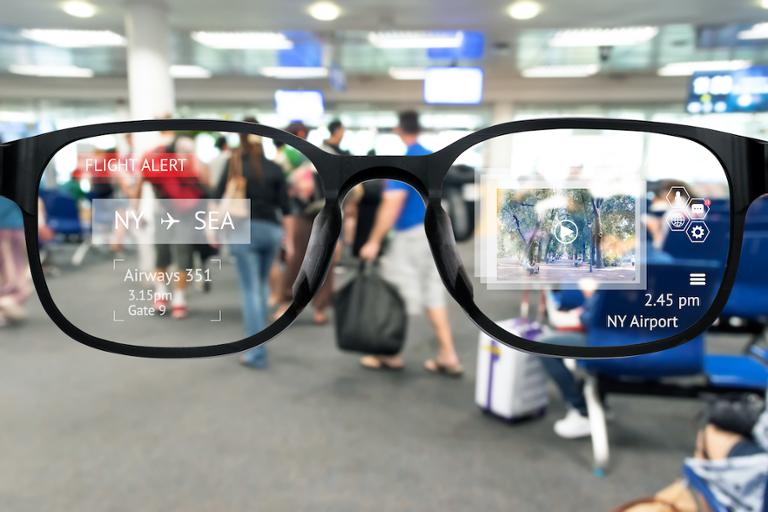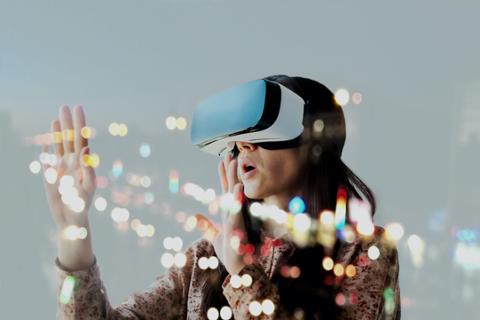Rumors of Apple’s augmented-reality (AR) glasses have emerged again, driven by “Apple leaker” Jon Prosser, who suggests that he has inside information about the device’s hardware and software.
Prosser has a good track record when it comes to Apple product rumors—earlier this year, he accurately predicted when Apple would roll out the new iPad, MacBook Air, and iPhone SE—so the tech news outlets are listening to what he has to say. And his prediction is pretty straightforward: “Apple Glass” will wirelessly tether to the user’s iPhone (in a manner akin to the Apple Watch) and use the latter’s processing power to deliver AR experiences to the lenses of the glasses.
Prosser suggested that the prototype he viewed had plastic frames, which might end up as metal in the final version. Those frames supposedly have a LIDAR scanner lodged in the right temple, which will use laser light to measure and capture the wearer’s environment. He also said the price for the base model will be $499, and Apple may unveil it either in the fourth quarter of 2020 or the first quarter of 2021.
Apple has been building out the foundation of its AR ambitions for some time. At WWDC 2019, for instance, it introduced RealityKit, which includes a variety of features for coding AR apps—including the ability to track and render human motion. RealityKit also supports building multiplayer apps, allowing multiple people to view the same AR environment; that could come in very useful for future AR games.
But cool features such as motion capture and multiplayer are just one part of the equation; although the iPhone supports AR functionality, those who follow Apple’s developments have been waiting years for the company to introduce AR glasses of some sort.
If Prosser is correct, that moment is coming within the next few quarters. But will such a device succeed in the open marketplace? For Apple, that’s the multi-billion-dollar question. Although Apple CEO Tim Cook has expressed confidence that AR will evolve into a ubiquitous (and, presumably, ultra-profitable) technology, AR apps and games have a very mixed record when it comes to sales and usage.
For example, the AR game “Pokemon Go” was a huge hit… way back in 2016. The rise of “Pokemon” encouraged a boomlet of AR games and apps, some based off well-established IP such as “The Walking Dead.” None of that new software managed to rack up blockbuster numbers, though.
Nonetheless, game developers seem confident in the future of AR. This year’s edition of the Game Developer Conference’s annual survey (which gathers responses from roughly 4,000 game developers) revealed that 32 percent of developers think that AR will be the dominant “immersive reality” technology in five years, outpacing the 16 percent who think that neither AR nor VR will be important.
Could an AR headset spark off a robust AR industry in the same way that the emergence of the iPhone kicked off the huge and highly profitable market for mobile apps? If the rumors are true, Apple is making a big bet on that very scenario playing out. Much hinges on whether developers will find something like “Apple Glass” exciting enough to build that necessary app market—and whether there will be “killer” AR apps beyond games.



